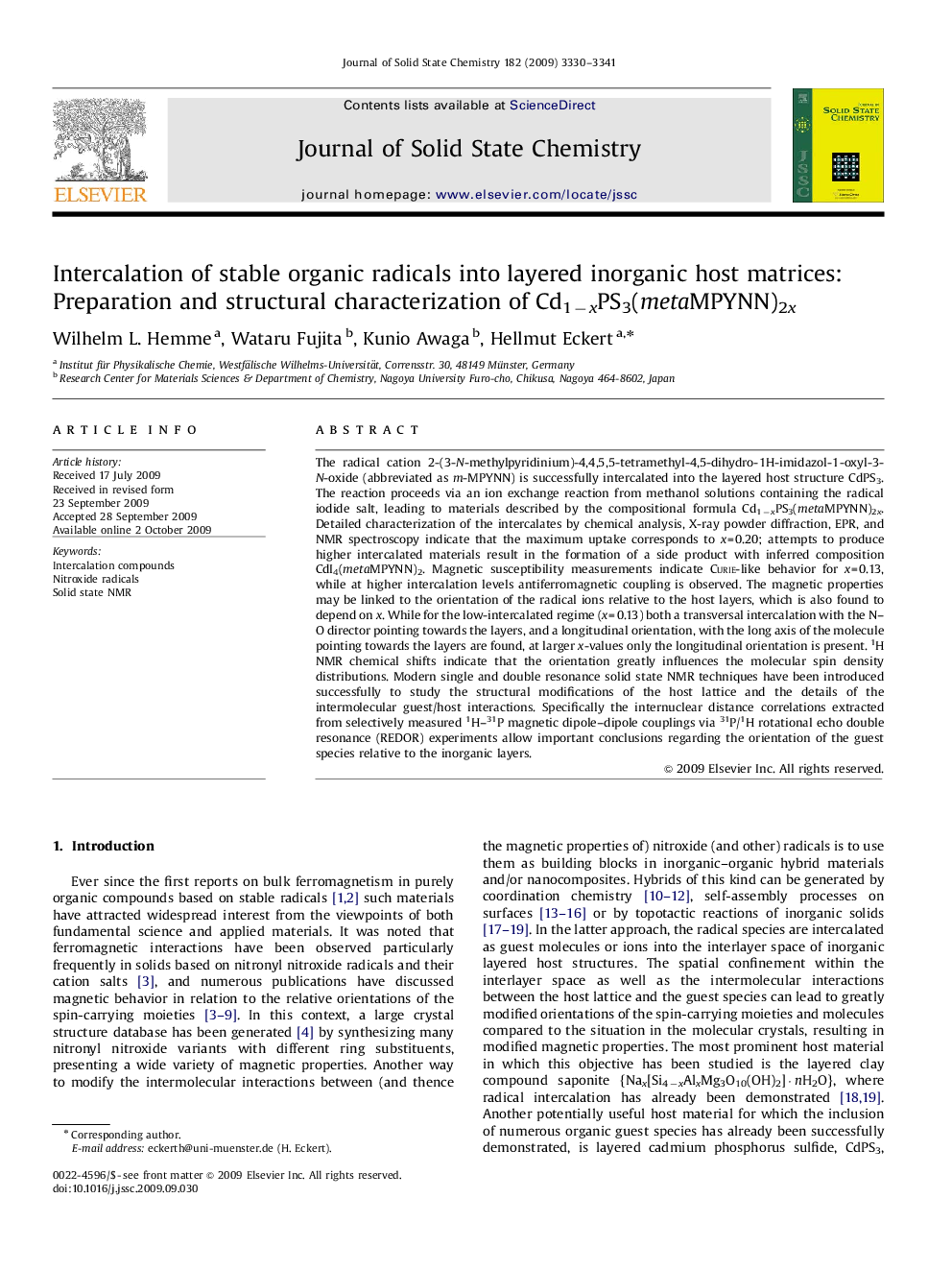| Article ID | Journal | Published Year | Pages | File Type |
|---|---|---|---|---|
| 1333578 | Journal of Solid State Chemistry | 2009 | 12 Pages |
The radical cation 2-(3-N-methylpyridinium)-4,4,5,5-tetramethyl-4,5-dihydro-1H-imidazol-1-oxyl-3-N-oxide (abbreviated as m-MPYNN) is successfully intercalated into the layered host structure CdPS3. The reaction proceeds via an ion exchange reaction from methanol solutions containing the radical iodide salt, leading to materials described by the compositional formula Cd1−xPS3(metaMPYNN)2x. Detailed characterization of the intercalates by chemical analysis, X-ray powder diffraction, EPR, and NMR spectroscopy indicate that the maximum uptake corresponds to x=0.20; attempts to produce higher intercalated materials result in the formation of a side product with inferred composition CdI4(metaMPYNN)2. Magnetic susceptibility measurements indicate Curie-like behavior for x=0.13, while at higher intercalation levels antiferromagnetic coupling is observed. The magnetic properties may be linked to the orientation of the radical ions relative to the host layers, which is also found to depend on x. While for the low-intercalated regime (x=0.13) both a transversal intercalation with the N–O director pointing towards the layers, and a longitudinal orientation, with the long axis of the molecule pointing towards the layers are found, at larger x-values only the longitudinal orientation is present. 1H NMR chemical shifts indicate that the orientation greatly influences the molecular spin density distributions. Modern single and double resonance solid state NMR techniques have been introduced successfully to study the structural modifications of the host lattice and the details of the intermolecular guest/host interactions. Specifically the internuclear distance correlations extracted from selectively measured 1H–31P magnetic dipole–dipole couplings via 31P/1H rotational echo double resonance (REDOR) experiments allow important conclusions regarding the orientation of the guest species relative to the inorganic layers.
Graphical abstractThe orientation of a nitroxide radical relative to the CdPS3 layers in the corresponding intercalation compound is inferred from x-ray diffraction and solid state NMR spectroscopy.Figure optionsDownload full-size imageDownload as PowerPoint slide
